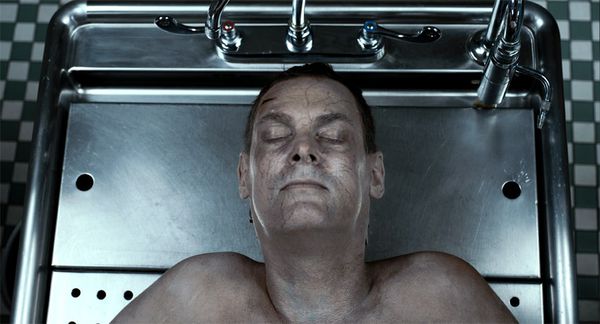 |
| Jeremy Childs as the John Doe on the slab Photo: Arrow Films |
One night, in a hospital morgue, a man brought in as a suicide victim suddenly wakes up. Confused and apparent missing parts of his memory, he begins to wander. Before long he finds himself in the office of a psychiatrist who urges him to stay calm as he tries to work out just what his problem is - but what's really going on could be quite beyond the scope of the psychiatrist's understanding and dangerous on a scale he has never previously imagined.
Weaving together strands of psychological and occult horror, Billy Senese's slow-burning thriller The Dead Center is bound to give audiences a chill. It's premièring in the Frightfest strand at this year's Glasgow Film Festival and Billy agreed to answer some questions about it, beginning by explaining how the idea originated.
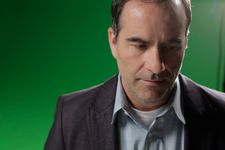 |
| The Dead Center director Billy Senese Photo: Arrow Films |
"I’ve had people close to me with mental health issues," he says. "A good friend of mine died several years ago from a drug overdose. Leading up to his death, he was making all kinds of self-destructive choices. I knew he was teetering on the edge, and I kept trying to help him, but it just got worse and worse. Then I got the call, and I wasn’t prepared for how much it affected me. He was 35. It just felt so random and insane that this could happen. After this, I started writing to cope with it. I wrote and directed a short film, called The Suicide Tapes. This was the beginning. After that, I developed it into The Dead Center."
How did he find the main shooting location and how significant was it in shaping the film?
"The hospital location was the one we were most worried about," he says. "Our budget was extremely limited, so we were at the mercy of whatever presented itself. In short, we got lucky. We found this abandoned hospital from the 1960s-1970s that was in the process of being re-imagined by developers for condos, restaurants, etc. We basically renovated an entire section of one of the floors – painted all the walls and doors, sanded the edges, brought it back to looking like a functioning hospital. We shot in the month of June in Tennessee, with no air conditioning, so it was extremely hot and everyone was sweating profusely. In some ways, it became the madhouse we all wanted it to become."
Daniel Forrester, the psychiatrist, is a complex character from the outset. How involved was Billy in casting Shane Carruth in the role, and how did he work with him to take the character through the process of change that we see onscreen?
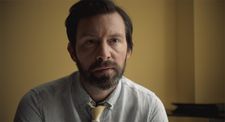 |
| Shane Carruth as Dr Forrester Photo: Arrow Films |
"I had just finished the script, and we were in the process of looking for money to produce it. I was sitting at home re-watching Upstream Color, and I thought to myself, Shane would make a great psychiatrist. He has such a natural quality and a seriousness that I thought would really work for this character. So I called my producer, Denis Deck, and we found a way to send Shane the script. Luckily, he connected to the material immediately and agreed to come on board. And from there, Shane and I just started talking through the vision I had for Daniel. Daniel’s arc becomes pretty simple. At the beginning of the film, he has this real desire and compassion to help people. It’s at the core of his identity. And by the end of the film, he realises that hope is dead. No one gets better. No one gets out alive."
Psychiatrists often get a bad rap in films. Despite everything that happens in this one, they’re clearly people who have focused their carers on trying to help others. Was the unusual nature of this portrayal something Billy was conscious of when developing the film?
"I’m not sure," he says. "I actually have a very high regard for psychiatrists. I think they are often unsung heroes. It’s harder to measure a psychiatrist’s success rate. The metrics are often binary with medical doctors – the heart surgery was a success, or it wasn’t. But healing the mind is a tricky thing. Therapy can be a layered, long, and delicate process. I believe to have true break-throughs in the process, doctors don’t do it by intellectualising or rationalising with their patients; they do it through sympathy and compassion. Through forming true connections. Shane and I talked a lot about approaching his character with this level of compassion. And when you watch the film and find out about Dr. Forrester’s backstory, you understand where that compassion comes from. But you also understand that he shares a lot in common with these patients, too. That’s probably what makes him such a good doctor."
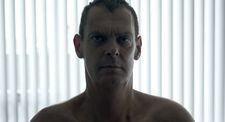 |
| John Doe when back on his feet Photo: Arrow Films |
There’s a tension in the film between a view of the world that has emerged from scientific/medical tradition and the Aristotelian approach that says we should evaluate what we see in front of us. Was Billy interested in exploring ideas around the limits of science?
"Yes, I was very much interested in exploring current systems or protocol in the medical world that are broken and need to be fixed. A lot of these patients that come through the door need treatment and either can’t afford it, or the very nature of their condition precludes them from knowing how to ask for help. Given that a doctor usually knows what’s best for their patients, when faced with unfair and frustrating circumstances, are they within their rights to bend (or even break) the rules?"
How did he go about finding the funding and practical support needed to make this film? Did the people he pitched it to easily connect with the concept?
"This is the first time I ever tried to raise funds from investors, so it was a big learning experience for me. It’s hard, because investing in an independent film is a risky proposition. They are not investing in a movie to make money, necessarily. They may be investing for personal reasons. I found I had more luck acquiring funding when I stopped pitching my film and started asking potential investors what they wanted out of the project and how we could work together to achieve that."
The film really stands out for its atmospheric sound design. How did he approach creating that auditory environment?
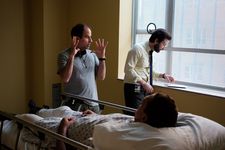 |
| Billy Senese at work on set Photo: Arrow Films |
"I approached the sound design with the same intentions as everything else. These are my ideas, now how do can we translate them into reality? In this case, through sound. And of course, this a psychological horror film that takes place in an emergency psychiatric ward. How could I not take advantage of sound to get into people’s heads? Sound design is essential for me as a genre filmmaker. I did a series of radio plays a few years back, and it taught me so much about how to tell stories through sound. You can create so much tension with sound alone".
How does he feel about the film being at Frightfest?
"I’m very excited for my film’s European première, and this seems like a great festival to kick things off. After I was invited to take part in the festival, they had an artist render an illustration of my film (as well as all the films screening at the fest.) The illustration was created by Ashton Lamont. I mean, what a badass, thoughtful idea. After I saw this, I knew for sure I was in the right place for my première."
Finally, what’s next for him as a filmmaker?
"I’m collaborating on a couple of projects right now," he says. "One is an Iranian spy adaptation that I was commissioned to write. The other is hopefully my next directing project. It’s a little too early to talk about the details, but it’s an American thriller in the vein of Straw Dogs and Deliverance."
The Dead Center will screen in Glasgow on Friday 1 March.





















